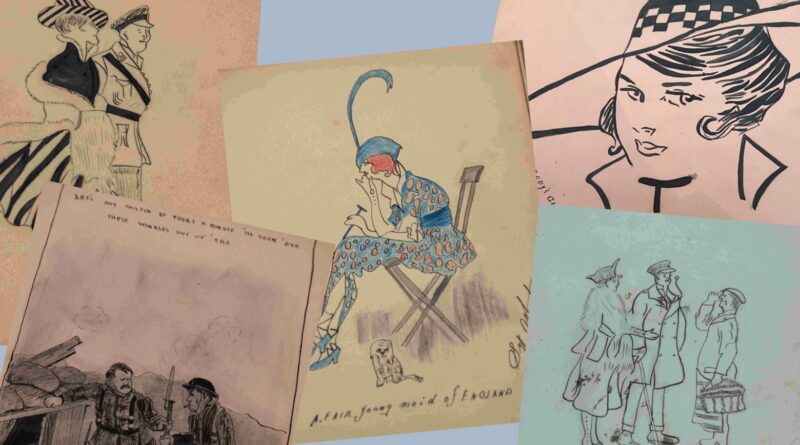First World War Album features soldiers’ art
The discovery of an album kept by a First World War nurse has shed light on therapies used to help shell-shocked soldiers a century ago.

In 1917, Jean Thomson was a nurse at Merryflats War Hospital in Govan, Glasgow, a poorhouse requisitioned as a military hospital in 1914. She helped servicemen shattered by the 1914-18 Great War recover both mentally and physically. One of the ways she did that was through art and creativity. She invited them to draw and write their thoughts in her album which was discovered in a locked trunk during a house clearance.
The 107-year-old album, uncovered by Hansons Auctioneers, offers new insight into medical techniques to ease what is now known as Post Traumatic Stress Disorder. It also sheds light on the character of the men sent into a war that cost the lives of around 40 million people, both military and civilian.
Charles Hanson, owner of Hansons Auctioneers, said: “The album was brought to us for valuation by Jean’s granddaughter. She had no idea it existed. She found it among her mother’s belongings after her death. Page after page is taken up by sketches and words put there by heroes from the trenches. Their ability to rise above adversity is demonstrated. For example, one cartoon, drawn by soldier Pte Coles, shows a wounded man, bandaged from head to foot and on crutches, talking to a nurse. He says, ‘I’m feeling a lot better today’. She replies, ‘And you’re looking much better too’. The cartoon captures the British spirit, and sense of humour, in the darkest times.
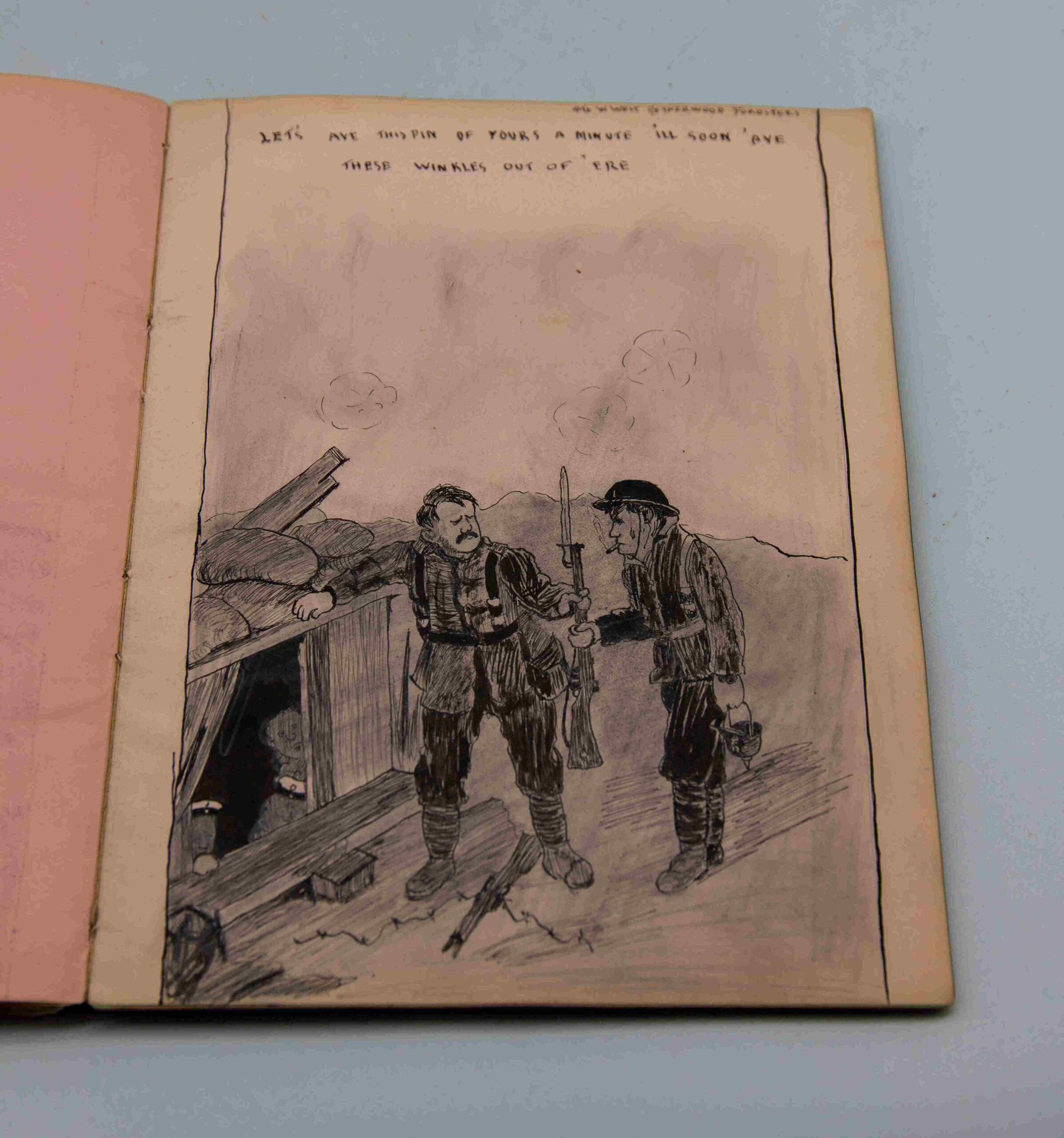
“Jean encouraged patients to draw and write to aid rehabilitation. She worked with soldiers who’d suffered shell shock through battle stress. Symptoms included tremors, loss of sight or hearing and extreme fatigue. Jean’s album shows she was no stranger to ‘trench foot’ either. This horrible condition, first reported during combat in Russia in 1812, occurred when soldiers wore tight boots for prolonged periods in damp conditions. Fungal infections led to tingling, itching, swelling and, at worst, decay. However, the bulldog spirit shines bright in a cartoon entitled ‘Trench Feet’. It depicts a dog sporting an enormously swollen and bandaged paw alongside the words, ‘It’s better to be a good old has been than a never was’.
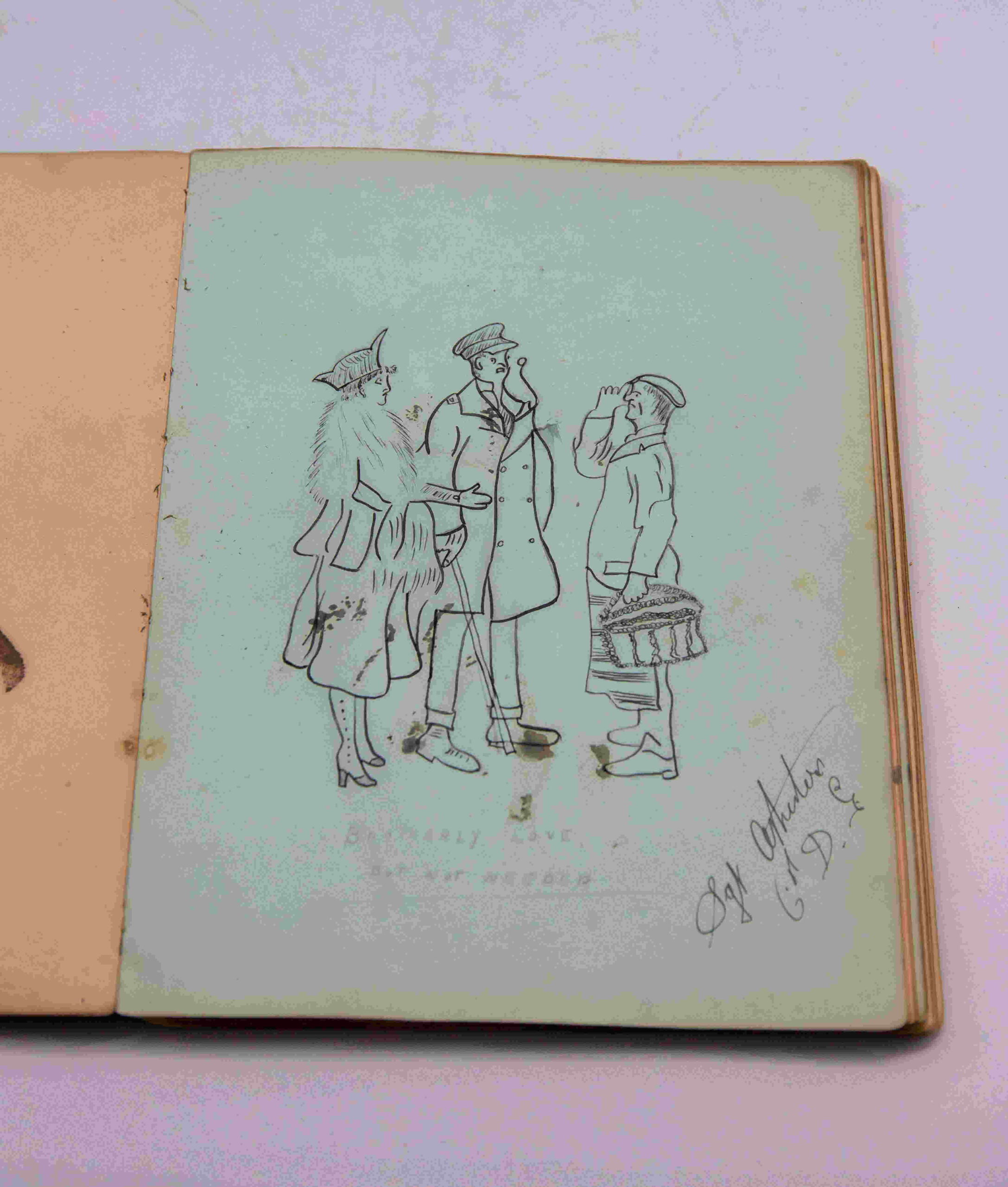
“Humility comes to the fore with every turn of the page. In 1917 Pte Smith wrote a prayer, ‘Grace After Meals – Thank the Lord for what we have had. But if there had been more we should have been glad. But as the times have been so bad we will make a shift for what we have had – Amen’.

“Other WW1 mementos include necklaces made for Jean by injured soldiers from beads and rolled paper. This may sound odd but after suffering wartime horrors creative tasks proved beneficial. In fact, embroidery was used as a therapy for injured WW1 soldiers. The War Office feared it would feminise them but the skill not only aided convalescence, some made a living through embroidery after the war.


“Creativity and its ability to focus the brain is a wonderful thing. It is, no doubt, why one soldier painted a vase of flowers in Jean’s album. More artistic contributions come courtesy of Sgt Atherton whose drawings captured the fashion of the time, one being entitled, ‘A fair young maid of England’. Another telling sketch shows a silhouetted image of a soldier in uniform clutching his sweetheart with the words, ‘This parting gives me pain’.
“Discoveries like this open our eyes to history and offer a glimpse of the character of men and women caught up in WW1. Its estimate is a modest £70-£100 but perhaps it deserves a place in a war museum.”
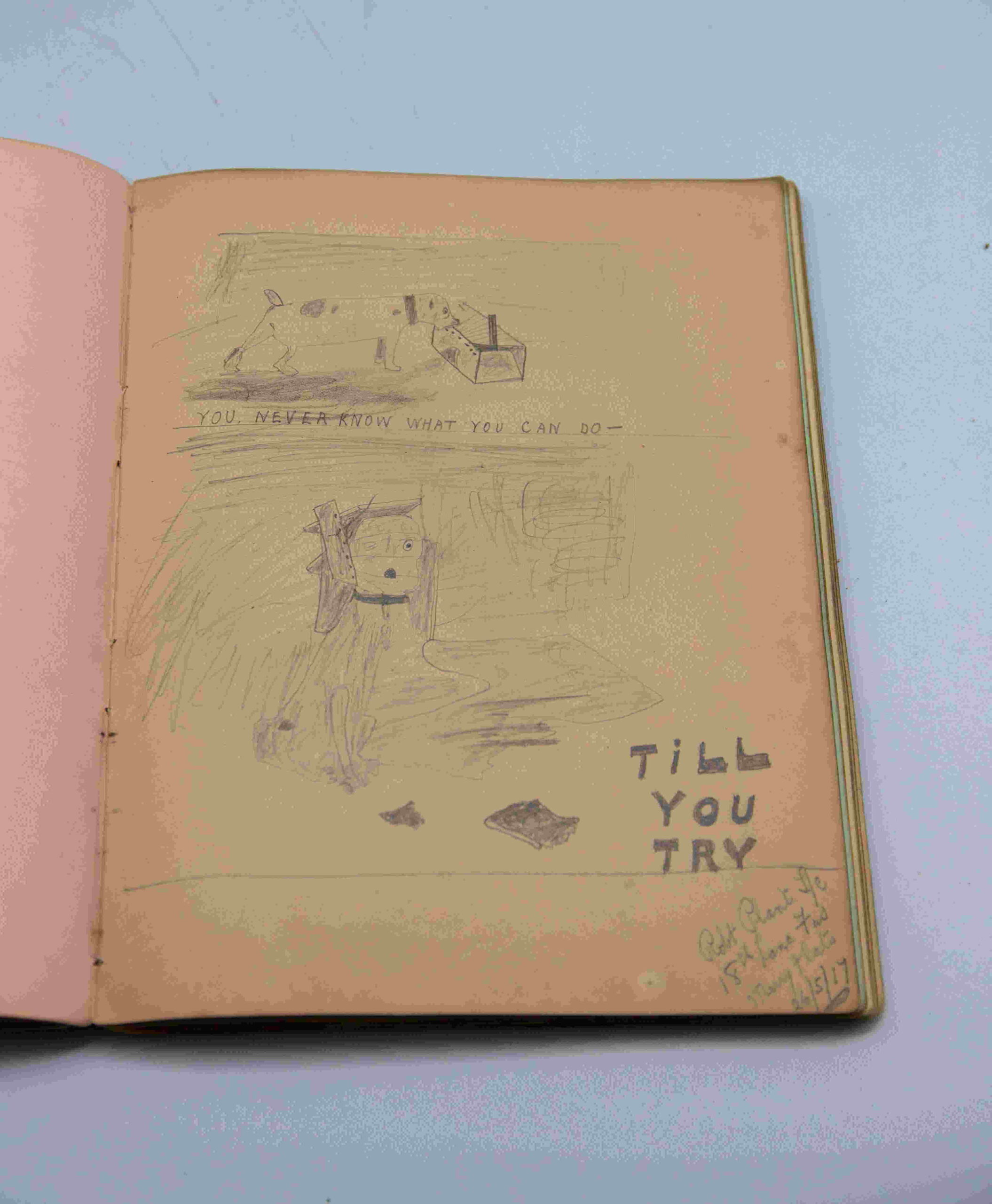
The Nottingham vendor, retired civil servant Alison Jean Rutherford, is Jean’s granddaughter and named after her. She said: “I discovered the album while clearing out my mum’s house after her death in 2022, aged 93. My mum was Nancy, Jean’s only child, and she spent most of her life in Scotland though she moved south to St Albans for her later years to be near me.
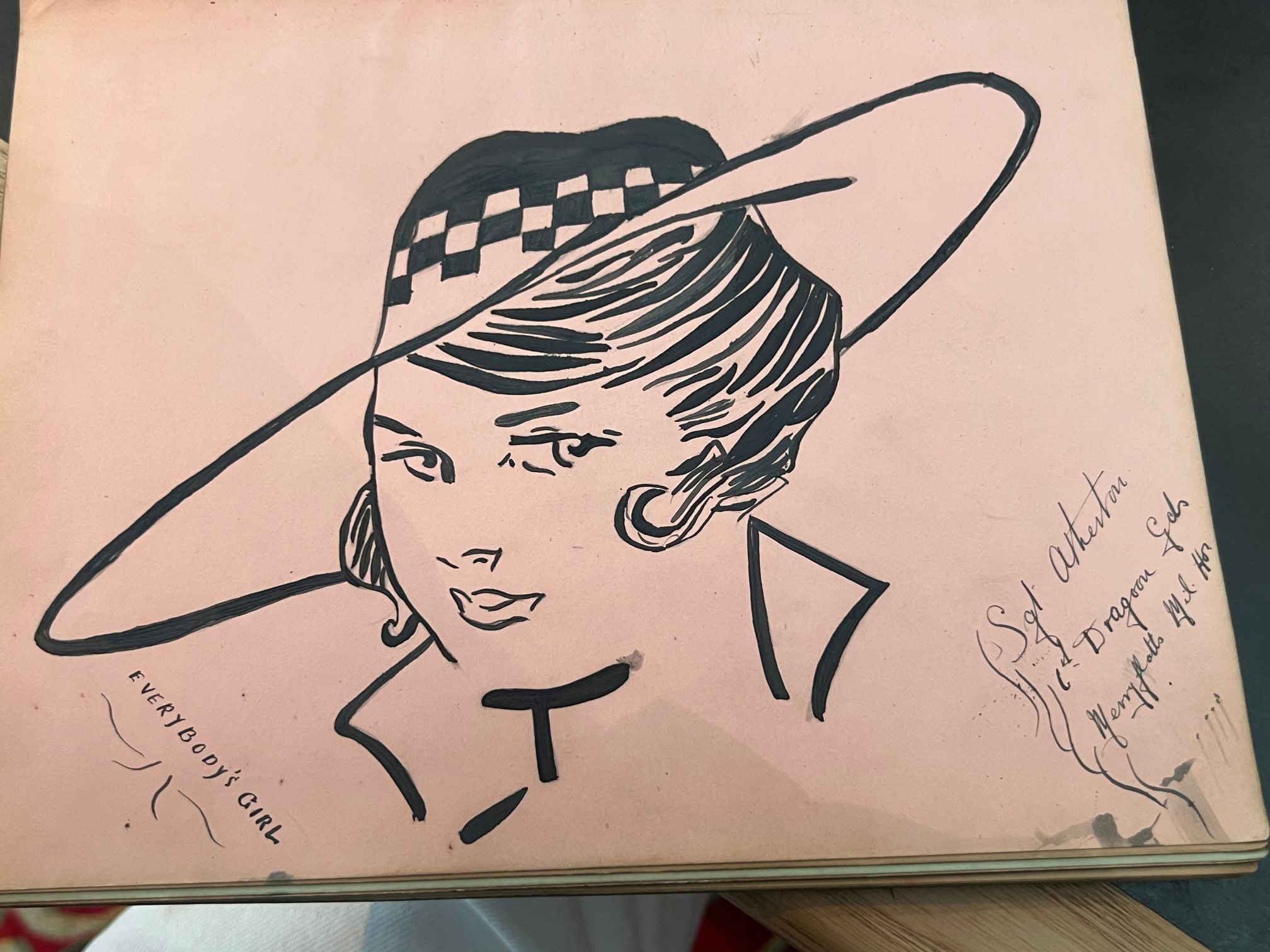
“My mother never showed me this album, though she gave me several rolled bead necklaces and explained how they were made by the soldiers and often given to the nurses. I found the album in an old trunk full of family papers that I took from her house after she died. Luckily I had the key.
“Since moving to Nottingham to be nearer my own older daughter, I have been working my way though these papers, and found this album along with photos of my granny in 1917. It seemed right to share it more widely, and I will make a donation to the Poppy Appeal from any money raised.”

Jean, the daughter of a Glasgow church minister, qualified as a doctor in the 1920s. In 1926 she married Arthur Browning (1897-1962), also a doctor born in Eaglesham, Scotland. They met at Glasgow Medical School. He played rugby for Scotland seven times between 1920-23 and was said to have the strongest drop kick in the land. This was despite suffering a knee injury in WW1 while served with the Gordon Highlanders in France.
Charles said: “Arthur and Jean exemplified their generation. Arthur served his country again in WW2, this time as a medical officer in the Royal Army Medical Corps. He was posted for several years to the Middle East, and his letters home to Jean and Nancy have been gifted by the family to the Imperial War Museum. His civilian career included working at Glasgow’s Western Infirmary, the Pilkington Orthopaedic Hospital in St Helens and later as a GP in Sutton Coldfield, West Midlands, and for many years in Bathgate, Scotland. When he retired in 1960 the people of Bathgate wished to honour him with a public testimonial. He declined the fuss, preferring to accept it privately. Our ancestors served their county well. Long may finds like this resurface so we can remember them.”
The album will be offered in Hanson’s Derbyshire Antiques and Collectors Auction on July 23.

